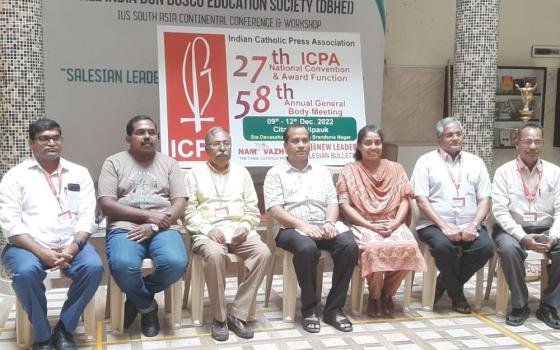HOLY WARRIORS: A MODERN HISTORY OF THE CRUSADES
By Jonathan Phillips
Published by Random House, $30
In July 1993 I stood on the battlements of the Crac des Chevaliers, the 800-year-old fortress of the crusader knights who had planted themselves in northern Syria, between Turkey and Lebanon, to control the flow of goods and people in every direction.
Within its 15-foot-thick walls and 13 towers, for a century it housed 4,000 crusaders and their horses, with a pillared refectory, a chapel, and a monastic courtyard where the knights might wish to pray. It fought off many an attack, but in 1271 the knights surrendered to a barbarous Turk who freed them on the condition they left the country.
A few days later, in Damascus’s Omayyed Mosque, built on the site of a Christian church named for John the Baptist, I stood between the ancient wooden coffin of the legendary warrior sultan Saladin and the shrine to John the Baptist, whose head is believed to be buried underfoot.
Those moments rushed back as I read two recent books about the Crusades, that historical phenomenon that chronologically lasted 400 years, but, in the consciousness of the East and West, has taken on a life of its own. The Crusades, and reaction to them, were used to justify our invasions of Iraq and Afghanistan, and the actions of young Muslim men and women who blow themselves to bits in order to take non-Muslims with them.
What does it take to keep an 800-year-old hatred alive?
In January, ABC News reported that a Michigan rifle-maker inscribed New Testament quotes on the sights made for snipers in Iraq and Afghanistan. In short, kill a Muslim for Jesus.
In 2009 the Los Angeles Times told us that the top soldier assigned to track down Osama bin Laden saw the war on terrorism as a clash between Judeo-Christian values and Satan. President Bush, he said, was “in the White House because God put him there.” And all along, political groups in Western Europe, particularly in the Netherlands and Switzerland, see Muslim immigrants as a corrupting stealth invasion from the East.
 THE SAINT AND THE SULTAN: THE CRUSADES, ISLAM, AND FRANCIS OF ASSISI'S MISSION OF PEACE
THE SAINT AND THE SULTAN: THE CRUSADES, ISLAM, AND FRANCIS OF ASSISI'S MISSION OF PEACE
By Paul Moses
Published by Doubleday, $26
To read Jonathan Phillips’ Holy Warriors and Paul Moses’ The Saint and the Sultan is to put on hold both any preconceptions we have held about the Crusades and to discover their complexities and contradictions. The concept of the crusade is enlarged to include Catholics killing fellow Christians, and men singing, “God wills it.” Christians crusaded to free themselves, through indulgences, from the “wages of sin.” They slaughtered thousands of innocents and, on the same day, reeking of blood, they kissed the tomb of Jesus in Jerusalem.
From 1096, when Pope Urban II roused 60,000 faithful to rescue the Holy City, to 1492, when the last Moors were driven from Grenada, armies marched and sailed to the Levant for five reasons:
- To reclaim Jerusalem and other Christian sites from Muslim conquerors;
- To gain indulgences, remission from the punishment due to sin, which, they believed, the church leaders had power to distribute as if it were money in a bank;
- To conquer areas in the East to enhance their kingdoms in Europe;
- To pillage Arab cities and take their riches home;
- To recover relics, above all the “true” cross of Jesus, a fragment of which they again and again carried into battle, while Saladin retained another fragment with which to taunt them.
Popes called for “crusades” against Muslims in Spain, Albigensian heretics in France, and pagans in Eastern Europe.
Phillips narrates the five major Crusades -- plus minor ones like the Children’s Crusade of 1212 and France’s St. Louis IX’s second try -- with St. Francis of Assisi appearing in the Fifth. Phillips includes the sex scandals of kings, the Inquisition, the prosecution of the Knights Templar for alleged homosexual rites, and recreates the great battles, their heroes and their horrors.
The first Christian crusaders “recovered” Jerusalem then purged it of unbelievers. Crusaders tortured, burned, beheaded, threw them from towers, piled chopped-off heads, hands and legs in the streets, and seized infants by their feet and dashed their heads against the walls. Little wonder these events “left an indelible stain on Muslim-Christian relations down the centuries.”
 The Second Crusade in 1145 was preached by Bernard of Clairvaux, the “self-appointed moral compass of the age,” and ordered by Pope Eugenius III (who expanded its goals to include local enemies in Spain and in the Baltic). The expedition ended in humiliation. The crusaders made final camp on the wrong side of Damascus. There was neither water nor source of food. Parched and starving, after four days they turned tail for home.
The Second Crusade in 1145 was preached by Bernard of Clairvaux, the “self-appointed moral compass of the age,” and ordered by Pope Eugenius III (who expanded its goals to include local enemies in Spain and in the Baltic). The expedition ended in humiliation. The crusaders made final camp on the wrong side of Damascus. There was neither water nor source of food. Parched and starving, after four days they turned tail for home.
The Third Crusade starred England’s King Richard the Lionhearted, of “indescribable vigor and superhuman courage,” who was also reckless, devious and cruel, and went to Mass every day. He conquered the seaport fortress of Acre, on the Gulf of Haifa, with his eyes set on Jerusalem, which Saladin had retaken in 1187. When Saladin dallied rather than make a deal to return Jerusalem and the true cross, Richard marched 2,700 Muslim captives out in front of the Muslim camp and beheaded them all in cold blood.
The horrendous Fourth Crusade, from 1198 to 1201, was diverted from taking Jerusalem to the more profitable venture of looting the Greek Christian capital of Constantinople. That added nothing to the bid to subdue Islam, but it did create the final breach between the church of the East and the church of the West.
On the Fifth Crusade Phillips gives a paragraph to the incident that inspired professor-journalist Moses’ book: Francis of Assisi’s bold 1219 attempt during the siege of Damietta at the mouth of the Nile to achieve peace by converting the enemy. In Moses’ The Saint and the Sultan, Francis emerges as a peace activist ahead of his time.
Moses, combining library research, interviews with Franciscan scholars, and his own travels to Cairo, Damietta and Assisi, has blended history and political commentary into a spiritual statement about the bonds of humanity. Because pious legend encrusts the facts of Francis’ life, and because there are 13 accounts of Francis’ meeting with Sultan Malik al-Kamil, Saladin’s nephew, Moses has to peel away piety and propaganda.
 Francis knew about war. In a 1202 local conflict between Assisi and Perugia, the soldier Francis, age 20, killed or wounded men on the battlefield, was captured, imprisoned for a year, suffered malaria, and returned home a “physical and emotional wreck.” He had symptoms of post-traumatic stress disorder. He began to show concern for the poor but, still enamored with the romance of knighthood, rode off to oust German forces from papal lands.
Francis knew about war. In a 1202 local conflict between Assisi and Perugia, the soldier Francis, age 20, killed or wounded men on the battlefield, was captured, imprisoned for a year, suffered malaria, and returned home a “physical and emotional wreck.” He had symptoms of post-traumatic stress disorder. He began to show concern for the poor but, still enamored with the romance of knighthood, rode off to oust German forces from papal lands.
A dream confused him. He beheld his family home bedecked with weapons. A second dream convinced him God was calling him to something else. Francis kissed on the hand and mouth a leper who reached out to him. His father, furious at the gossip, beat him, threw him in a dungeon, then dragged him before the bishop for a reprimand. To signify the poverty of his new life, Francis stripped naked in the courtroom.
In 1217, the Fifth Crusade sailed to Acre, then paraded its piece of the “true cross” through the countryside. By 1218 it had debarked north of the heavily fortified Damietta. In the following bloody year thousands died on both sides. Sultan al-Kamil offered to return Jerusalem, which Muslims had held for almost 40 years. Cardinal Palagius, the papal representative and de facto commander of the Western forces, refused. His goal was to conquer all of Egypt.
In the sweltering summer of 1219, Francis and his companion, Brother Illuminato, members of Francis’ new Order of Friars Minor, arrived at Damietta. Palagius was preparing for a final assault. Convinced that Jesus had spoken to him in prayer, Francis, reportedly an eloquent spontaneous preacher, dared to speak vigorously against the battle. The troops laughed him off and marched into disaster. They’d failed to carry water and collapsed in the sizzling sun.
The sultan’s men faked a retreat then attacked with arrows, spears, clubs and swords. More than 4,000 crusaders were slaughtered. Francis had warned them that God was not on their side.
On Aug. 19, the two friars trekked to the sultan’s camp across the battlefield strewn with stinking corpses, body parts, rotting dead horses, and farmlands burned black. The intellectual al-Kamil beheld the new arrival, Francis, a short, scrawny man with a long face, thin nose and lips, black beard and a sweet, sonorous voice. Both men enjoyed a lively debate; they talked for several days. There is no record of what they said, but Moses concludes it must have been a “reasoned public discussion about their religious differences,” the medieval equivalent of an ecumenical dialogue. At the end the sultan offered Francis precious gifts, but Francis accepted only an ivory horn used to summon believers to prayer.
On his way back to Assisi, Francis learned that five brothers he had dispatched to preach to Muslims in Morocco had been beheaded. Though warned, they had wanted martyrdom and they got it. Francis also learned that in his absence his rivals in the order had taken over and changed the rules. He withdrew from the leadership, fell into depression, and struggled fruitlessly to promote his new ideas about how do deal peaceably with the Muslim world.
On Sept. 14, 1224, on retreat in his mountain hermitage in Tuscany on the Feast of the Exaltation of the Cross, as he prayed for the safety of his friend, al-Kamil -- threatened by still another crusade -- the stigmata began to appear in his hands and feet. Francis died in 1226; the Sixth Crusade, which he had opposed once it was proposed, set off in 1228.
Ironically, Jerusalem was regained in 1229 without shedding blood. Emperor Frederick II, a cultivated and controversial ruler whom Pope Gregory IX had excommunicated, struck a bargain with al-Kamil.
What have we learned?
In his final chapter Phillips alerts us. We have allowed cultural movements like colonialism and romanticism, in novels and the imagery of war propaganda -- including Eisenhower’s memoir Crusade in Europe, and Arab dictators claiming Saladin’s mantle -- to distract us from the unforgettable wound these adventures inflicted. Barack Obama reminded us in his Nobel Peace Prize address, “No holy war can ever be a just war.” And Moses would add, for St. Francis, that we must love our enemies, or else.
[Jesuit Fr. Raymond A. Schroth is a professor at St. Peter’s College in Jersey City, N.J.]



